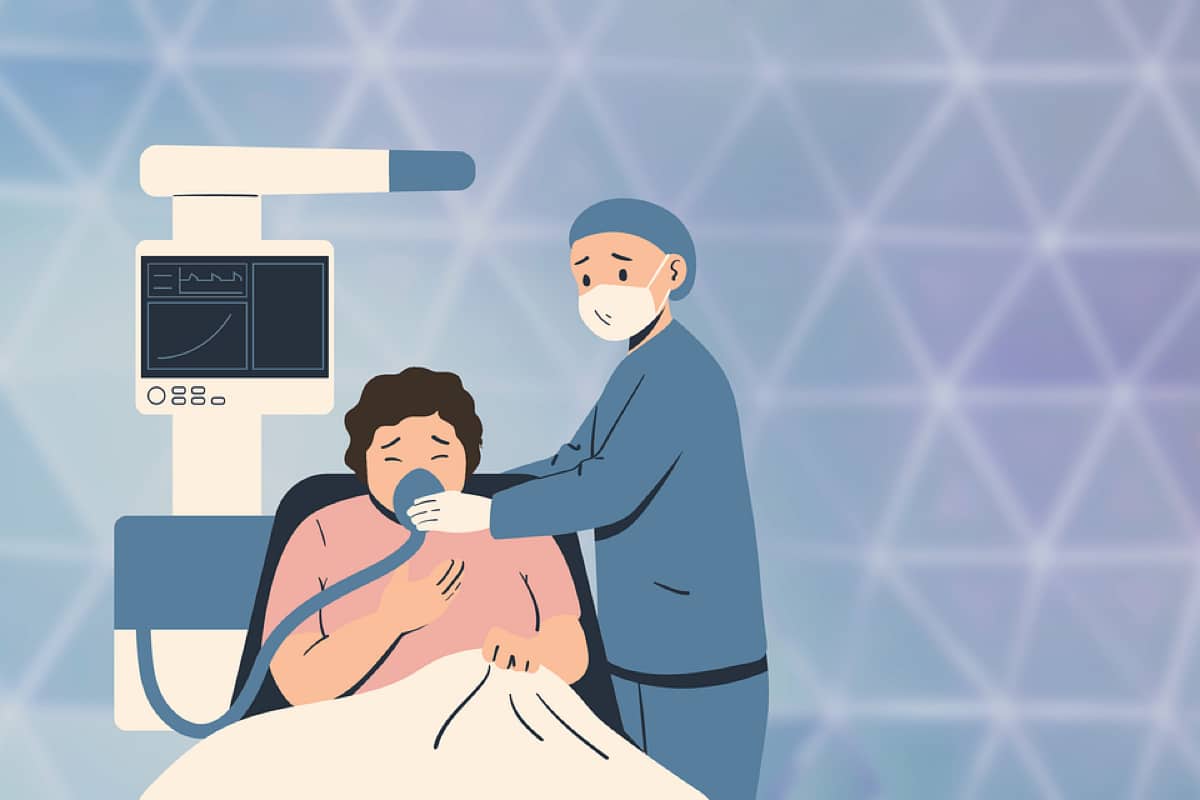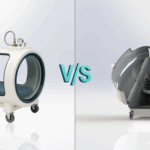In this article we will be looking at how oxygen is used to treat COVID patients in medical practices and hospitals. We will also look at how an oxygen concentrator can assist you within the safety and comfort of your own home.
South Africa’s 4th wave is looming
We are in November and with the upcoming school holidays & Festive Season, a fourth wave is inevitable. More than 13 million people in South Africa have been vaccinated. Unfotunately that does not mean we are exempt from getting COVID or even winning the battle should we get it. We still have to follow all social distancing rules & guidelines.
How does COVID affect the lungs?
Most people infected will only develop mild symptoms and will recover on their own, this excludes the ‘long haulers’ devastated by the long-term after effects of COVID. Symptoms are similar to the common cold. In severe cases infection spreads to the lungs and respiratory system.
The infection then causes the lungs to swell and fill with fluid & debris. In more severe cases you will get pneumonia where the air sacs in your lungs fill with mucus, fluid and other cells that are trying to fight the infection. The more fluid builds in your lungs the harder it gets to breathe.
Why oxygen is so important in treating COVID patients
Oxygen is a vital part in human existence, unfortunately in the world we live in today, we only have about 21% oxygen in our atmosphere. For any healthy individual 21% oxygen is enough, but if you suffer from any respiratory issues or other health related ailments this percentage is not sufficient.
How patients are treated with oxygen in hospital?
Dr Emmanuel Taban, a pulmonologist at Mediclinic Midstream had the following to say; “80% of patients with COVID-19 admitted to hospital don’t need to be put on life support (a ventilator). ‘This is because we can correct their oxygen by giving it to them in a different way, such as a nasal cannula – a small tube that fits into each nostril – or via a face mask. This method has a low flow rate and is much more accessible and less invasive than a ventilator. Most patients with COVID-19 can be managed with oxygen, anticoagulation therapy (drugs that prevent blood clots), and by placing them in the prone position (lying flat on their stomach). Placing patients in the prone position early can prevent the need for a ventilator and shorten the length of ICU stay.
Dr Taban adds that 17% of patients admitted to Mediclinic Midstream ICU currently require mechanical ventilation.
Most patients with COVID-19 are first put on oxygen (face mask or rebreather mask) and if they don’t cope, we then put them on a high-flow oxygen device. We only consider intubation if the patient is showing signs of respiratory failure as evidenced by: their oxygen saturations dropping below 90%; if they’re breathing too fast and getting tired while on oxygen; or they’re confused. In some patients we can use a non-invasive form of ventilation that doesn’t require insertion of a tube through the mouth or nose.”
Oxygen delivery systems
- Nasal cannula – this is the easiest method of administering low to mild oxygen. Oxygen is delivered through the nose and can be set to 1-6 litres per minute. An oxygen concentrator works perfect in this method.
- Face mask – this method is for individuals who require higher levels of oxygen. The face mask can be set to deliver between 5-10 litres of oxygen per minute. This method is also done by use of a bigger oxygen concentrator.
- Non-rebreather mask – this method helps deliver oxygen in emergency situations. It consists of a face mask connected to a reservoir bag filled with a high concentration of oxygen. The reservoir bag is connected to an oxygen tank. The mask covers the patient’s nose and mouth
- Rebreather mask – Unlike the above, this mask does not have a one-way valve. It consists of a face mask connected to a reservoir bag filled with a high concentration of oxygen. The reservoir bag is connected to an oxygen tank. The mask covers the patient’s nose and mouth.
- Venturi mask – This method is mainly only used in hospitals where exact amounts of oxygen needs to be delivered to a patient. The mask provides oxygen at flow rates that are lower than the patient’s inspiratory demands so that when the patient’s inspiratory flow exceeds the gas flow rate from the mask, room air is entrained.
- High-flow nasal cannula (HFNC) – this method uses heated and humidified oxygen through a HFNC. This method is highly popular in treating patients with acute respiratory failure.
Oxygen systems for home use
The first 2 oxygen delivery methods above can be safely administered by use of an oxygen concentrator in the comfort of your own home. As both these methods are for less severe cases it can assist you in the early stages of the infection by increasing the oxygen in your body aiding in a faster recovery.
How does oxygen concentrators work?
O2 Concentrators are very easy to set up and requires only one power source. If you purchase one at Salvagente, we also assist in setting everything up by use of our manuals or telephonically. We also add the necessary tubing and should you require any additional tubing, masks, etc, please let us know and we can send you a quote.
Who can use an oxygen concentrator?
We always advise our clients to consult with their GP before deciding on any treatment, but persons of any age can use an oxygen concentrators. It is non-invasive and the only main issue might be the face mask method for those suffering from claustrophobia.
How much does it cost and what do I need?
You can view the prices for our oxygen concentrators, but reputable 5lt concentrators are around R15 000 and the 10lt ones around R30 000. This is a once off price and all you’ll have to pay additionally is electricity to run the machine and consumables eg tubing, cannulas, masks.
There are 2 concentrators to choose from. The smaller one is a 5L oxygen concentrator which delivers 1-5 Liters oxygen per minute and works perfect for a nasal cannula. The bigger concentrator delivers up to 10 Litres oxygen per minute. A nasal cannula and face mask method can be used.
Be sure to only consider oxygen concentrators that deliver 93% oxygen on ALL flow levels, as some concentrators only has a 93% purity level on 1lt per minute. Higher flow rates sacrifice purity (sometimes as low as 20% on 5lt flow rate).
What else will I need?
Depending on how much you’ll be using the machine, you will have to clean or replace the filters once in a while. If you use the machine constantly the filters might need changing a bit more. Other than that, you won’t need anything else except the consumables (tubing etc as previously discussed).
How can I buy one and when will I get it?
You can place your order online by clicking HERE and filling out all your details. For local deliveries within South Africa, your delivery charges will be displayed at the bottom of the page when you’ve selected your province.
At the time of writing this article, we do have stock availble and orders can ship as soon as payment reflects. Deliveries within South Africa normally takes 1-3 working days.
For international deliveries, please send us an email with your delivery details and we will source a quote for you.
If you’d like any additional tubing etc, also please send us an email with a list of what you need.
IMPORTANT oxygen concentrator shortage
For the majority of 2020 and beginning 2021 there has been a major worldwide shortage of oxygen concentrators. In preparation for the 3rd wave and the upcoming 4th wave we have made sure to have enough stock ready, unfortunately when these sell out we are not sure when we’ll be able to order more and when they’ll get here.
Conclusion
We hope this article was helpful in explaining the use and importance of oxygen in the treatment of COVID-19 patients. Please feel free to contact us should you have any additional questions. We are happy to assist.
Contact us for any further enquiries
Salvagente
+27 (0)72 422 1967
[email protected]







Leave a Reply